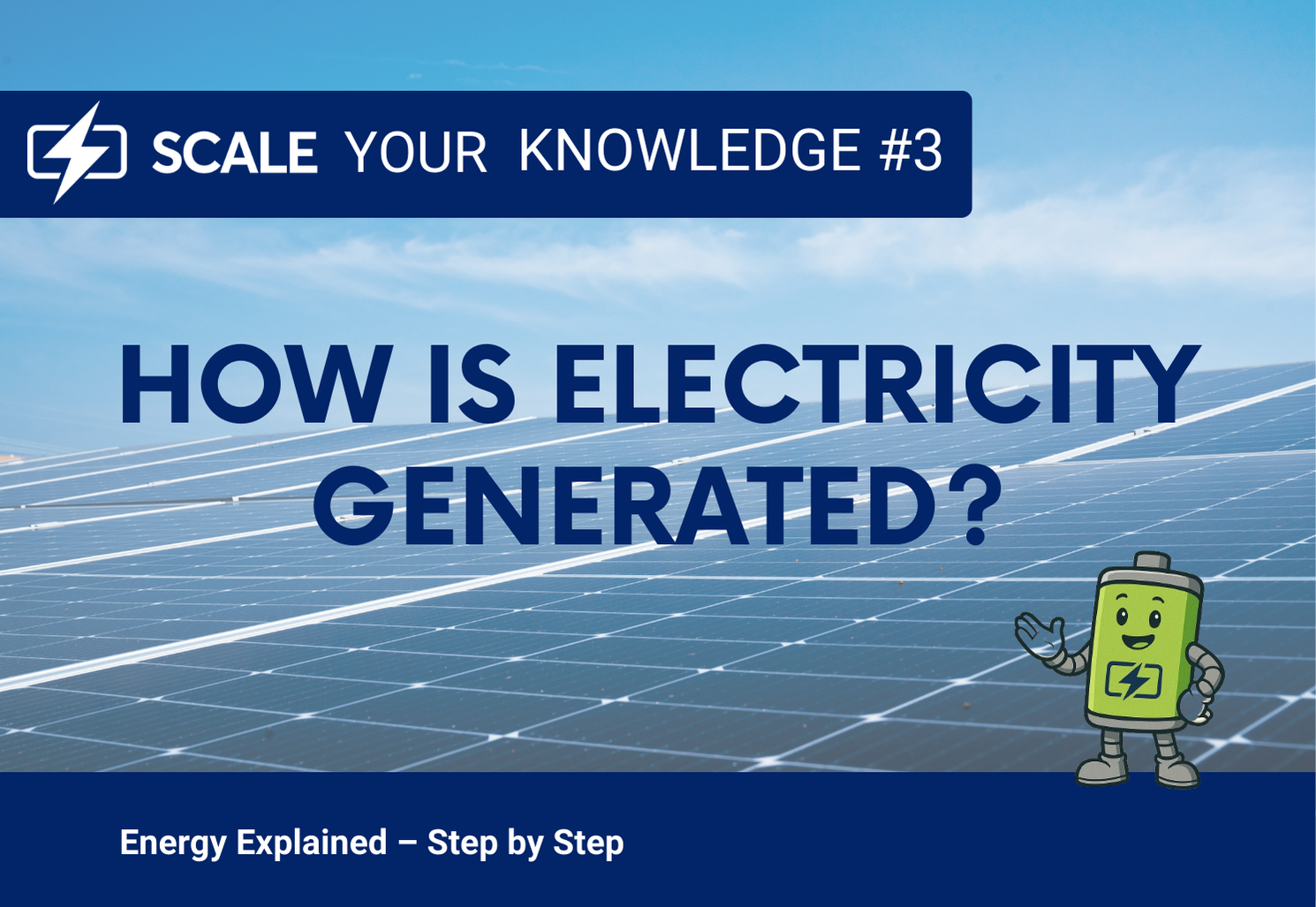News
Scale Your Knowledge #3 – How Is Electricity Generated?

We use it every single day without thinking: when brewing coffee in the morning, scrolling on our phones, or switching on the lights at night. But few people ever stop to ask: How is electricity actually generated?
At its core, the principle is always the same: motion is converted into electrical energy. This transformation happens through a generator – whether inside a large power plant or a small wind turbine.
Conventional Power Generation
In traditional power plants (coal, gas, nuclear), the process almost always follows the same steps:
- A fuel is burned (or uranium is split) to produce heat.
- Water is heated until it becomes steam.
- The steam flows under high pressure through a turbine.
- The turbine drives a generator.
- Electricity is produced.
You could think of it as a giant kettle – but instead of boiling water for tea, the steam powers the entire grid.
Renewable Energy
Here, the energy comes directly from nature – without burning fossil fuels.
- Wind power: Wind turbines are essentially modern windmills. The wind moves the rotor blades, which drive the generator. The stronger the wind, the more electricity is produced.
- Hydropower: Flowing water in rivers or reservoirs pushes large turbines. In mountainous countries, hydropower remains an important and highly reliable source.
- Photovoltaics: A special case. Sunlight strikes solar cells, exciting electrons in semiconductor materials. Electricity flows directly from sunlight – clean and immediate, without moving parts.
Policy Framework: The EEG
To make renewable energy competitive in Germany, the Renewable Energy Act (Erneuerbare-Energien-Gesetz, EEG) was introduced in 2000. For many years, it guaranteed fixed feed-in tariffs for green electricity supplied to the grid. This policy created investment security for wind, solar, and biogas projects – and positioned Germany as a pioneer in renewable energy.
Without the EEG, the rapid expansion of wind and solar power would not have been possible. Today, we are seeing the results: there are already days when renewables cover the most of Germany's electricity demand.
Conclusion: Electricity is generated by making energy usable – conventionally through heat, steam, and turbines, or renewably through the direct power of sun, wind, and water. And thanks to political frameworks such as the EEG, one thing is clear: the future belongs to renewables.





